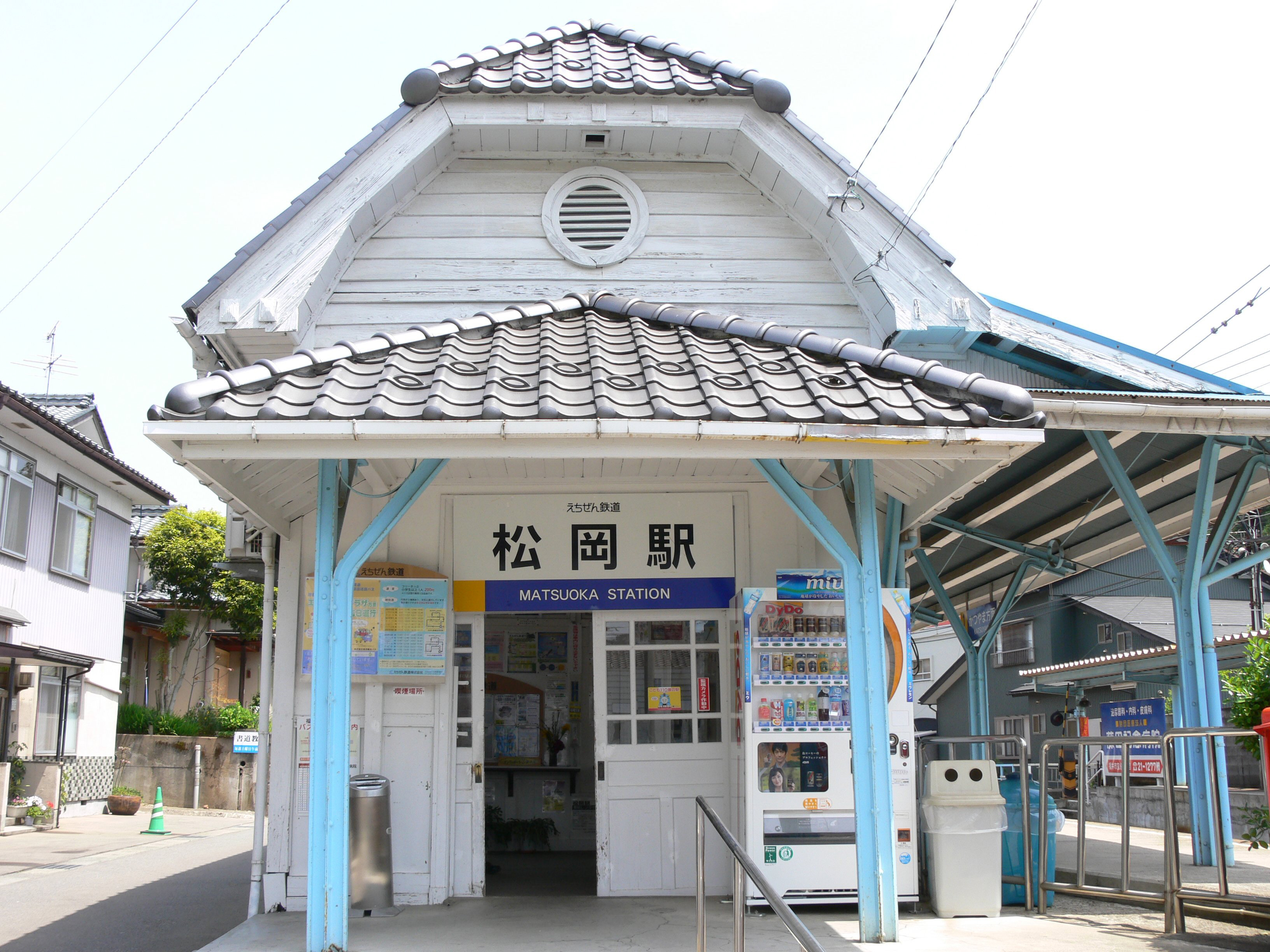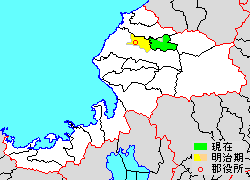|
Matsuoka, Fukui
was a List of towns in Japan, town located in Yoshida District, Fukui, Yoshida District, Fukui Prefecture, Japan. As of 2003, the town had an estimated population of 11,071 and a population density, density of 595.54 persons per km2. The total area was 18.59 km2. On February 13, 2006, Matsuoka, along with the village of Kamishihi, Fukui, Kamishihi (also from Yoshida District, Fukui, Yoshida District), was merged into the expanded town of Eiheiji, Fukui, Eiheiji. The area is still identified by the Matsuoka Station of the Echizen Railway Katsuyama Eiheiji Line. References External links Eiheiji official website Dissolved municipalities of Fukui Prefecture Eiheiji, Fukui {{Fukui-geo-stub ... [...More Info...] [...Related Items...] OR: [Wikipedia] [Google] [Baidu] |
List Of Towns In Japan
A town (町; ''chō'' or ''machi'') is a Local government, local administrative unit in Japan. It is a local public body along with Prefectures of Japan, prefecture (''ken'' or other equivalents), Cities of Japan, city (''shi''), and Villages of Japan, village (''mura''). Geographically, a town is contained within a Districts of Japan, district. The same word (町; ''machi'' or ''chō'') is also used in names of smaller regions, usually a part of a Wards of Japan, ward in a city. This is a legacy of when smaller towns were formed on the outskirts of a city, only to eventually merge into it. Towns See also * Municipalities of Japan * List of villages in Japan * List of cities in Japan * Japanese addressing system References External links "Large City System of Japan"; graphic shows towns compared with other Japanese city types at p. 1 [PDF 7 of 40 /nowiki>] {{Asia topic, List of towns in Towns in Japan, * ... [...More Info...] [...Related Items...] OR: [Wikipedia] [Google] [Baidu] |
Yoshida District, Fukui
is a district located in Fukui Prefecture, Japan. As of October 1, 2005, the district has an estimated population of 20,766 with a density Density (volumetric mass density or specific mass) is the ratio of a substance's mass to its volume. The symbol most often used for density is ''ρ'' (the lower case Greek letter rho), although the Latin letter ''D'' (or ''d'') can also be u ... of 220.12 persons per km2. The total area is 94.34 km2. Municipalities The district consists of one town: * Eiheiji ; History District Timeline Recent mergers * On February 13, 2006 - The town of Matsuoka and the village of Kamishihi were merged into the expanded town of Eiheiji. Notes References Districts in Fukui Prefecture {{Fukui-geo-stub ... [...More Info...] [...Related Items...] OR: [Wikipedia] [Google] [Baidu] |
Fukui Prefecture
is a Prefectures of Japan, prefecture of Japan located in the Chūbu region of Honshū. Fukui Prefecture has a population of 737,229 (1 January 2025) and has a geographic area of 4,190 Square kilometre, km2 (1,617 sq mi). Fukui Prefecture borders Ishikawa Prefecture to the north, Gifu Prefecture to the east, Shiga Prefecture to the south, and Kyoto Prefecture to the southwest. Fukui, Fukui, Fukui is the capital and largest city of Fukui Prefecture, with other major cities including Sakai, Fukui, Sakai, Echizen, Fukui, Echizen, and Sabae, Fukui, Sabae. Fukui Prefecture is located on the Sea of Japan coast and is part of the historic Hokuriku region of Japan. The Matsudaira clan, a powerful ''samurai'' clan during the Edo period that became a component of the Kazoku, Japanese nobility after the Meiji Restoration, was headquartered at Fukui Castle on the site of the modern prefectural offices. Fukui Prefecture is home to the Kitadani Formation and Kitadani Family, the Ichijōdani As ... [...More Info...] [...Related Items...] OR: [Wikipedia] [Google] [Baidu] |
Japan
Japan is an island country in East Asia. Located in the Pacific Ocean off the northeast coast of the Asia, Asian mainland, it is bordered on the west by the Sea of Japan and extends from the Sea of Okhotsk in the north to the East China Sea in the south. The Japanese archipelago consists of four major islands—Hokkaido, Honshu, Shikoku, and Kyushu—and List of islands of Japan, thousands of smaller islands, covering . Japan has a population of over 123 million as of 2025, making it the List of countries and dependencies by population, eleventh-most populous country. The capital of Japan and List of cities in Japan, its largest city is Tokyo; the Greater Tokyo Area is the List of largest cities, largest metropolitan area in the world, with more than 37 million inhabitants as of 2024. Japan is divided into 47 Prefectures of Japan, administrative prefectures and List of regions of Japan, eight traditional regions. About three-quarters of Geography of Japan, the countr ... [...More Info...] [...Related Items...] OR: [Wikipedia] [Google] [Baidu] |
Population
Population is a set of humans or other organisms in a given region or area. Governments conduct a census to quantify the resident population size within a given jurisdiction. The term is also applied to non-human animals, microorganisms, and plants, and has specific uses within such fields as ecology and genetics. Etymology The word ''population'' is derived from the Late Latin ''populatio'' (a people, a multitude), which itself is derived from the Latin word ''populus'' (a people). Use of the term Social sciences In sociology and population geography, population refers to a group of human beings with some predefined feature in common, such as location, Race (human categorization), race, ethnicity, nationality, or religion. Ecology In ecology, a population is a group of organisms of the same species which inhabit the same geographical area and are capable of Sexual reproduction, interbreeding. The area of a sexual population is the area where interbreeding is possi ... [...More Info...] [...Related Items...] OR: [Wikipedia] [Google] [Baidu] |
Population Density
Population density (in agriculture: Standing stock (other), standing stock or plant density) is a measurement of population per unit land area. It is mostly applied to humans, but sometimes to other living organisms too. It is a key geographical term.Matt RosenberPopulation Density Geography.about.com. March 2, 2011. Retrieved on December 10, 2011. Biological population densities Population density is population divided by total land area, sometimes including seas and oceans, as appropriate. Low densities may cause an extinction vortex and further reduce fertility. This is called the Allee effect after the scientist who identified it. Examples of the causes of reduced fertility in low population densities are: * Increased problems with locating sexual mates * Increased inbreeding Human densities Population density is the number of people per unit of area, usually transcribed as "per square kilometre" or square mile, and which may include or exclude, for example, ar ... [...More Info...] [...Related Items...] OR: [Wikipedia] [Google] [Baidu] |
Kamishihi, Fukui
was a village located in Yoshida District, Fukui Prefecture, Japan. As of 2003, the village had an estimated population of 3,492 and a density of 137.75 persons per km2. The total area was 25.35 km2. On February 13, 2006, Kamishihi, along with the town of Matsuoka (also from Yoshida District), was merged into the expanded town of Eiheiji 250px is one of two main temples of the Sōtō school of Zen Buddhism, the largest single religious denomination in Japan (by number of temples in a single legal entity). The other is Sōji-ji in Yokohama. Eihei-ji is located about east of Fu .... References Dissolved municipalities of Fukui Prefecture Eiheiji, Fukui {{Fukui-geo-stub ... [...More Info...] [...Related Items...] OR: [Wikipedia] [Google] [Baidu] |
Eiheiji, Fukui
is a town located in Yoshida District, Fukui Prefecture, Japan. , the town had an estimated population of 18,746 in 6,262 households and the population density of 200 persons per km2. The total area of the town was . The town is named for the famous temple of Eihei-ji. Geography Eiheiji is located in Yoshida District in northern Fukui Prefecture, in the river valley of the Kuzuryū River. Neighbouring municipalities *Fukui Prefecture ** Awara ** Fukui ** Katsuyama Climate Eiheiji has a Humid climate (Köppen ''Cfa'') characterized by warm, wet summers and cold winters with heavy snowfall. The average annual temperature in Eiheiji is 14.1 °C. The average annual rainfall is 2459 mm with September as the wettest month. The temperatures are highest on average in August, at around 26.7 °C, and lowest in January, at around 2.6 °C. Demographics Per Japanese census data, the population of Eiheiji has remained relatively steady over the past 50 years. His ... [...More Info...] [...Related Items...] OR: [Wikipedia] [Google] [Baidu] |
Matsuoka Station
is an Echizen Railway Katsuyama Eiheiji Line railway station located in the town of Eiheiji, Yoshida District, Fukui Prefecture, Japan. Lines Matsuoka Station is served by the Katsuyama Eiheiji Line, and is located 8.4 kilometers from the terminus of the line at . Station layout The station consists of two opposed side platform A side platform (also known as a marginal platform or a single-face platform) is a platform positioned to the side of one or more railway tracks or guideways at a railway station, tram stop, or transitway. A station having dual side platforms, ...s connected by a level crossing. The station is staffed. The wooden station building is protected by the government as a Registered Tangible Cultural Property. Adjacent stations History Matsuoka Station was opened on February 11, 1914. Operations were halted from June 25, 2001. The station reopened on July 20, 2003 as an Echizen Railway station. Surrounding area *The station is in the midst of a ... [...More Info...] [...Related Items...] OR: [Wikipedia] [Google] [Baidu] |
Echizen Railway
is a third-sector railway operating company located in Fukui, Fukui Prefecture, Japan. It owns and operates the Katsuyama Eiheiji Line between Fukui and Katsuyama and the Mikuni Awara Line between Fukui and Sakai. History In 1992, Keifuku Electric Railway, the predecessor of Echizen Railway, announced that it would end services between Higashi-Furuichi (now Eiheijiguchi) and Katsuyama stations on the Eiheiji Main Line (now the Katsuyama Eiheiji Line) as well as all service on the Eiheiji Line and replace them with buses. However, for several years this was fought by local municipalities; in 1997, the city of Fukui and other municipalities along the railway lines announced they would establish a committee to provide support to the company to continue operating the lines. However, two accidents in a six-month span on the Eiheiji Main Line (one on December 17, 2000, between and Higashi-Furuichi stations and another on June 24, 2001, between and stations) forced the compan ... [...More Info...] [...Related Items...] OR: [Wikipedia] [Google] [Baidu] |
Katsuyama Eiheiji Line
The is a railway line operated by Echizen Railway in Fukui Prefecture. The line extends 27.8 km from the city of Fukui to Katsuyama with a total of 23 stations. It was operated by Keifuku Electric Railway until 2001; Echizen Railway took over the line in 2003. Service Trains run twice per hour during the day; during morning peak hours between 7:00 and 9:00, three trains run per hour. There is a single Fukui-bound rapid train each morning, as well as a local "Mezamashi Train" (lit. "wake-up train") departing Katsuyama at 5:09 every Monday morning that connects with Osaka and Nagoya-bound JR West limited express trains departing from Fukui Station. History Kyoto Dentō, a former body of Keifuku began operating the line in 1914 between Shin-Fukui Station and Ichiarakawa Station (now Echizen-Takehara Station). The line was extended in 1918 to Ōno-Sanban Station (later renamed to Keifuku-Ōno), and again to Fukui Station in 1929. In 1974 due to falling ridership, the sec ... [...More Info...] [...Related Items...] OR: [Wikipedia] [Google] [Baidu] |




